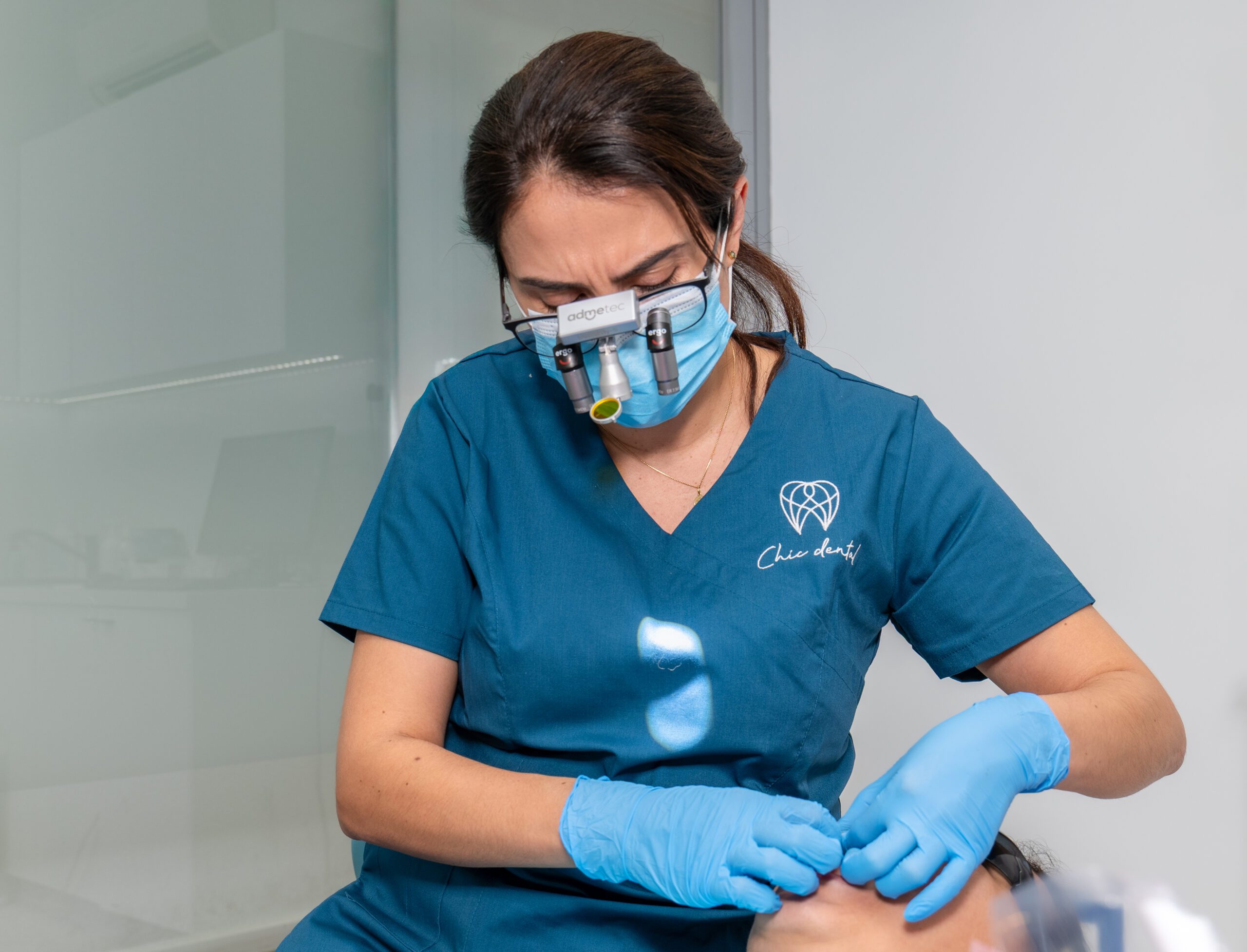Our advanced bracing solutions are as diverse as Melbourne itself, designed with precision for every face, age, and cultural background. We combine cutting-edge technology with preventive philosophy, ensuring your orthodontic journey creates beautiful smiles today while protecting your dental health for decades to come.


Braces have evolved significantly, combining modern orthodontic techniques with precise planning to deliver effective results. Today’s braces offer advantages that make them one of the most reliable options for achieving a straight, healthy smile, improving both function and appearance beyond traditional methods.
Aligning your teeth improves the look of your smile and boosts self-esteem.
Crafted from high-quality porcelain and secured with advanced bonding technology, veneers provide a durable solution lasting 10-15 years with proper care.
Straighter teeth are easier to clean, reducing the risk of cavities, gum disease, and plaque buildup.
Correcting crowding or spacing issues can prevent excessive wear, jaw pain, and other long-term issues.
Aligning teeth can help with certain speech difficulties caused by misalignment.
Properly aligned teeth are less likely to experience damage or shifting over time.
Getting braces is a structured process designed to improve the alignment of your teeth and create a healthier, more confident smile. Here’s what you can typically expect throughout your orthodontic journey:










Discover the latest in orthodontic care. From traditional braces to modern clear aligners, our articles provide expert guidance, treatment insights, and practical tips to help you achieve a healthy, straight, and confident smile.

Are you curious about transforming your smile but wary of traditional braces? Many people are turning to Invisalign as a modern solution to teeth straightening, but what exactly does that involve? This innovative approach has changed the landscape of orthodontics, offering a blend of effectiveness and discretion that appeals to adults and teens alike. In […]

Deciding on the right orthodontic treatment is more than just a choice—it’s a significant step on your journey to achieving the perfect smile. With Invisalign’s modern, clear aligners and traditional braces each offering distinct advantages, it can be quite a dilemma to decide which route to take. While braces have long been the traditional choice, […]

The journey to a straighter smile with Invisalign is an exciting one, but a common inquiry from many potential patients is, “What is the cost involved?” The answer isn’t as straightforward as one might hope, with various factors playing a crucial role in determining the overall expense. So, how much does Invisalign cost? In this […]
Determining whether you need braces typically involves observing various signs related to the alignment of your teeth and jaw. Common indicators include noticeable crowding or spacing between teeth, difficulty in biting or chewing, jaw pain or clicking sounds, and misaligned teeth that affect your smile or facial symmetry. If your teeth are visibly crooked or overlapping, braces may be needed to straighten teeth and improve oral function. Additionally, if you frequently bite your cheeks or the roof of your mouth, or if your upper and lower teeth don’t align properly when your mouth is closed, these could also be signs that braces are necessary. A definitive decision, however, should be made following an evaluation by a dental professional, who can evaluate your specific requirements and suggest the right course of treatment to achieve a healthy, straight smile.
Here, we shed light on how braces function from the initial consultation to the final removal.
Initial Assessment and Planning
Orthodontic treatment begins with a comprehensive evaluation at a dental clinic. This assessment includes examining the condition of the teeth and gums, taking X-rays, and making plaster models of the teeth. The goal is to diagnose specific dental issues such as crooked teeth, overcrowding, overbites, underbites, and other malocclusions affecting the upper and lower teeth. This initial stage is crucial for developing a tailored treatment plan that addresses the individual’s unique orthodontic needs.
The Mechanics of Dental Braces
Dental braces consist of several components, including brackets, archwires, and bands, which work together to apply gentle pressure on the teeth. Brackets, typically made from metal or ceramic, are bonded to each tooth. Archwires threaded through these brackets act as tracks to guide the movement of the teeth. By adjusting the tension on the archwires, dentists can control the direction and amount of pressure exerted on the teeth.
The consistent pressure applied by braces slowly moves the teeth into the desired position. This movement is possible due to the bone surrounding the teeth remodelling in response to the force. As pressure is applied, the bone on one side of the tooth dissolves, allowing the tooth to move, while new bone grows on the opposite side to support the tooth in its new position.
Duration and Adjustments
The duration of orthodontic treatment with braces varies depending on the individual’s age, the severity of dental problems, and the type of braces used. Typically, braces must be worn for one to three years. During this time, patients will have regular appointments at the dental clinic for adjustments. These appointments are crucial for progressing the treatment, as the dentist will tighten or replace the archwires, adjust bands, and make other modifications to ensure the teeth move correctly and efficiently.
Here’s how to care for your teeth while wearing braces.
Regular Cleaning and Brushing
Braces can trap food particles and plaque around the brackets and wires, leading to an increased risk of tooth decay and gum disease. It’s essential to brush your teeth thoroughly at least three times a day, ideally after every meal and snack. Use a soft-bristled toothbrush that can reach around the braces’ components. A toothbrush with a small head is preferable as it can navigate around the wires and brackets more effectively.
Consider using an interdental brush to remove any debris caught under the wires or between the brackets. Fluoride toothpaste should be used to help strengthen the tooth enamel and protect against decay. For those with adult teeth under orthodontic treatment, extra care should be taken to brush each tooth at the gum line as well as above and below the brackets to ensure all plaque is removed.
Flossing Daily
Flossing with braces can be challenging, but it’s crucial for removing plaque and food particles that a toothbrush can’t reach. Use waxed floss or a floss threader designed for braces to navigate the floss under the wires and between the teeth. Daily flossing prevents the buildup of plaque, which can lead to tooth decay and gum problems.
Rinse with an Antiseptic Mouthwash
Using an antiseptic mouthwash can alleviate gum and cheek inflammation caused by braces. Additionally, it can access hard-to-reach areas inaccessible by brushing or flossing, offering supplementary cleaning and bacterial protection.
Diet and Food Choices
What you eat while wearing braces is crucial for preventing damage to the brackets and wires. Steer clear of sticky, hard, and chewy foods that may damage or dislodge orthodontic appliances. Limit sugary and starchy foods to minimise plaque buildup, reducing the risk of tooth decay. Instead, choose softer foods that are gentler on the teeth and less likely to cause harm.
Protecting Your Braces
If you participate in sports or physical activities, it’s advisable to wear a mouthguard to safeguard your braces and mouth against potential injuries. Any impact to the face can damage the braces or injure the soft tissues of the mouth. A custom-made mouthguard from the dental clinic is ideal as it will fit comfortably and offer the best protection.
Regular Dental Check-ups
Regular dental clinic visits for check-ups and brace adjustments are imperative during orthodontic treatment. These appointments enable the dentist to track treatment progress and make any required brace modifications. Furthermore, professional cleanings can eliminate plaque and tartar accumulation often overlooked by routine oral hygiene practices.
Handling emergencies like a broken bracket or wire during orthodontic treatments requires immediate and appropriate actions to avoid discomfort and potential setbacks in your treatment progress. If you experience a broken bracket or wire, you should first contact your dentist to inform them of the situation. They can advise you on the next steps and book an appointment to resolve the issue.
In the interim, if a broken wire is causing discomfort, attempt using the eraser end of a pencil to carefully nudge it into a more comfortable position. If this isn’t feasible or doesn’t alleviate the discomfort, apply orthodontic wax to the wire’s end to prevent it from rubbing against your mouth. Avoid cutting the wire, as this could lead to accidental inhalation or swallowing.
If a bracket breaks and is still attached to the wire, leave it in place and cover it with wax if needed. If the bracket comes off completely, keep it and bring it to your next appointment. Avoid attaching it back yourself. Eating soft foods can also help prevent further damage and reduce discomfort until you can see your dentist.
Braces typically cause mild discomfort rather than pain, especially after initial placement and adjustments. This temporary sensation usually subsides within 3-5 days and can be managed with over-the-counter pain relievers. Our approach includes providing comfort techniques.
The ideal time is usually between 9-14 years when permanent teeth have emerged, but jaw growth is still ongoing. However, our family-centric practice recognises that the “best” age varies based on individual development and specific orthodontic issues. Early preventive assessment around age 7 can identify potential problems before they worsen.
Absolutely not! Adults of all ages can benefit from braces. Our advanced technology makes adult orthodontics more comfortable and discreet than ever. Many of our patients are professionals who appreciate our approach to adult treatment.
Treatment typically ranges from 3,000 to 9,000, depending on complexity, type of braces, and treatment duration. But it’s best to get a personalised quote from our clinic.
Brush after every meal using a soft-bristled or orthodontic brush at a 45-degree angle. Clean around brackets, between teeth, and along the gumline. We provide hygiene instructions and recommend tools like interdental brushes and water flossers to maintain excellent oral health during treatment.
Beyond aesthetic improvements, braces provide significant health benefits: preventing tooth decay, reducing gum disease risk, improving speech, enhancing digestion, and avoiding future dental problems. Our preventive philosophy ensures that your investment delivers lifelong value that extends far beyond appearance.
Most treatments range from 18-30 months, depending on individual needs. Our advanced technology can reduce treatment time. We work with you to create realistic timelines.
By choosing Chic Dental, you’re investing in expert care designed to enhance your smile with precision and confidence. Our proven track record, evidenced by over 200 five-star reviews, demonstrates our commitment to exceptional results and patient satisfaction.
Building on this foundation of excellence, we design each treatment plan with precision and purpose, considering your specific needs and goals. Our comprehensive approach ensures that your braces enhance your quality of life through improved function and aesthetics.
As part of our dedication to your satisfaction, expect complete transparency throughout your treatment journey. We provide detailed cost breakdowns and flexible financing options, making sure you understand every aspect of your investment in your smile. Our team takes pride in delivering high-quality care that’s both accessible and affordable.
Our multilingual staff and patient-centred approach further enhance this commitment to exceptional care, ensuring you’ll find support and guidance at every step. At Chic Dental, we’re creating beautiful smiles and building lasting relationships based on delicacy, precision and compassionate dental care.